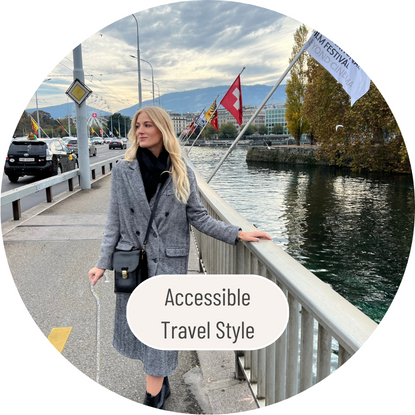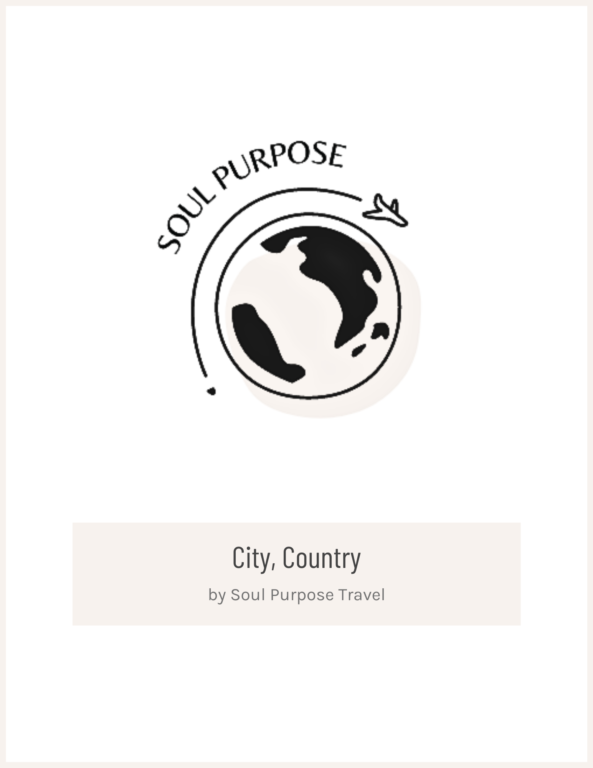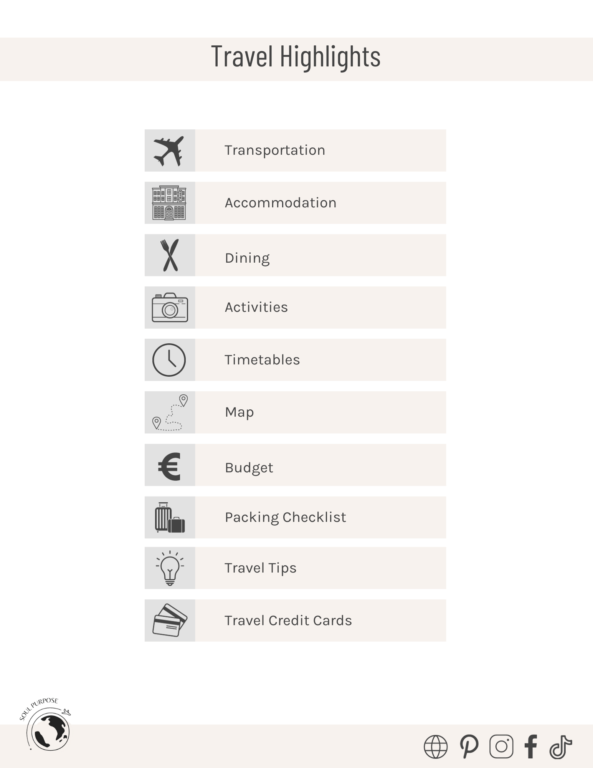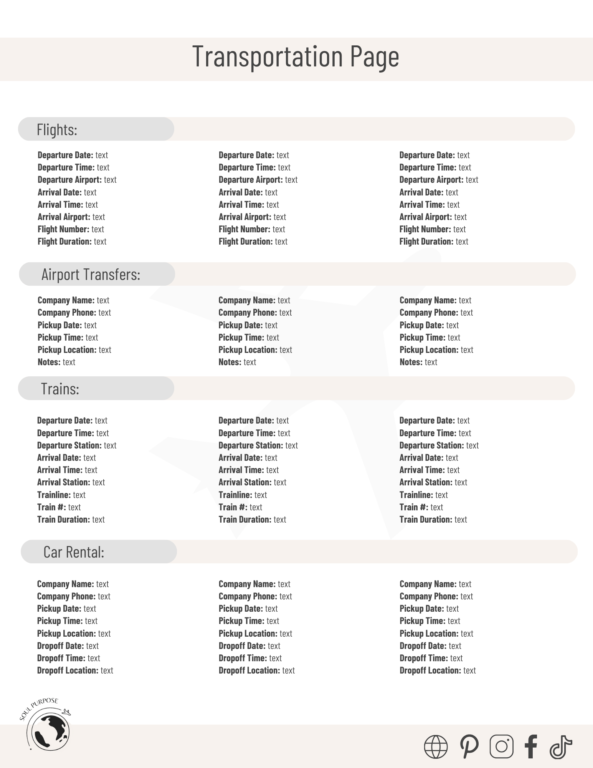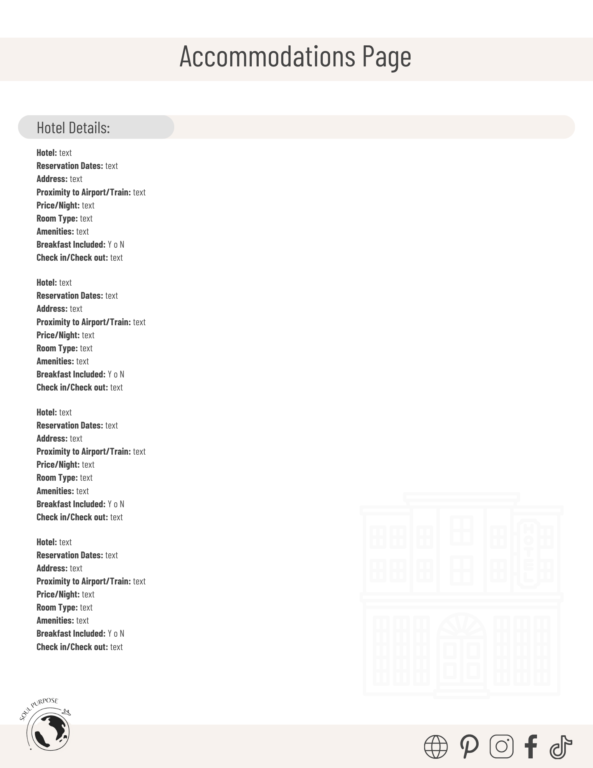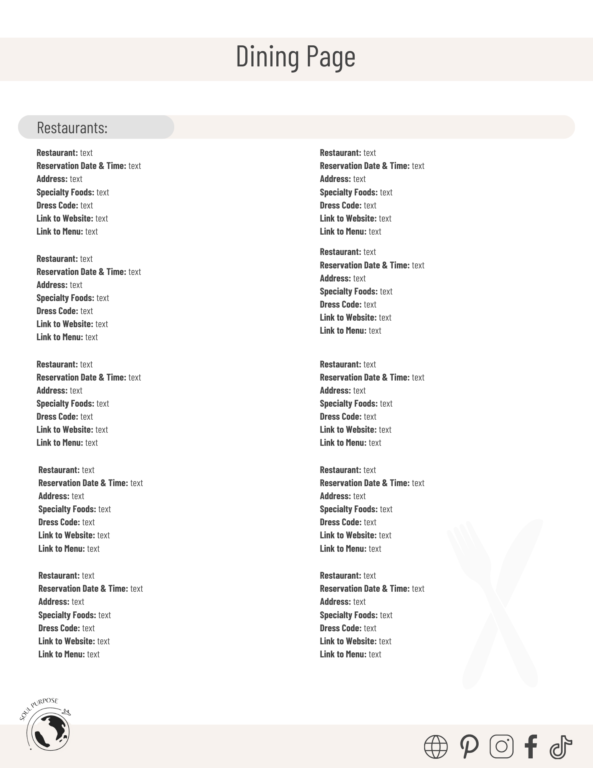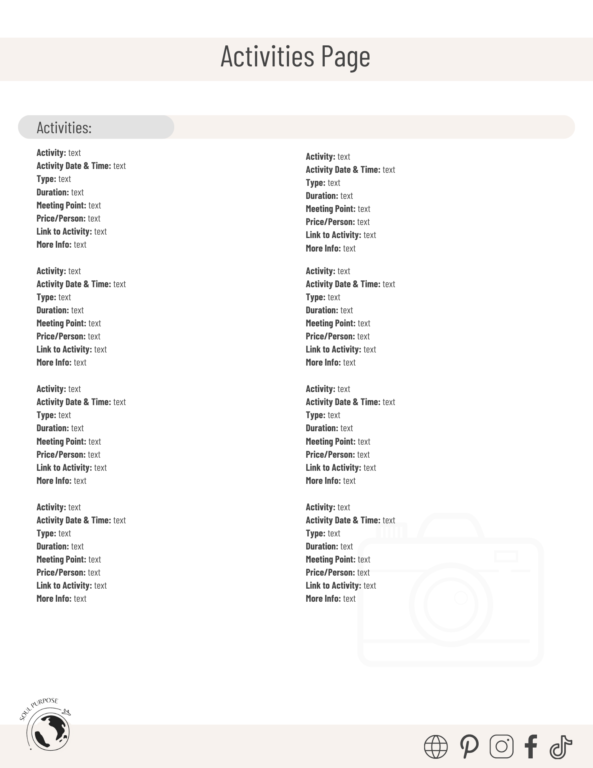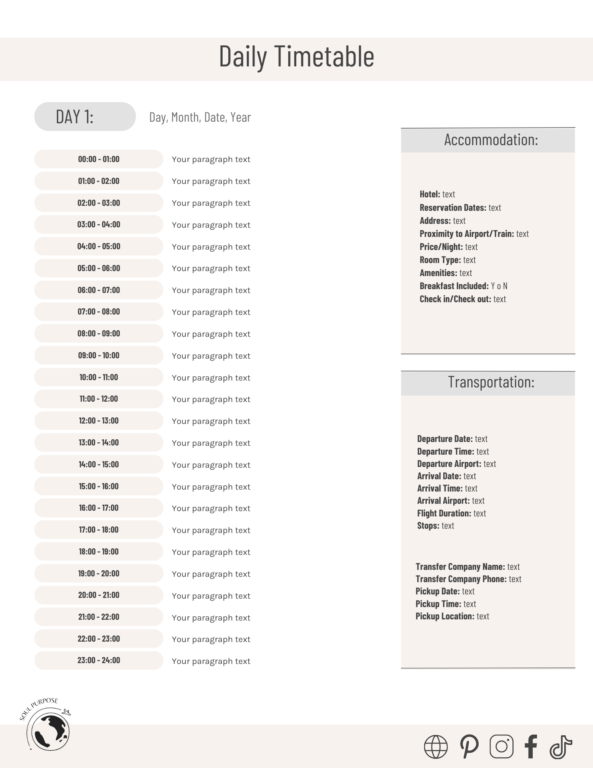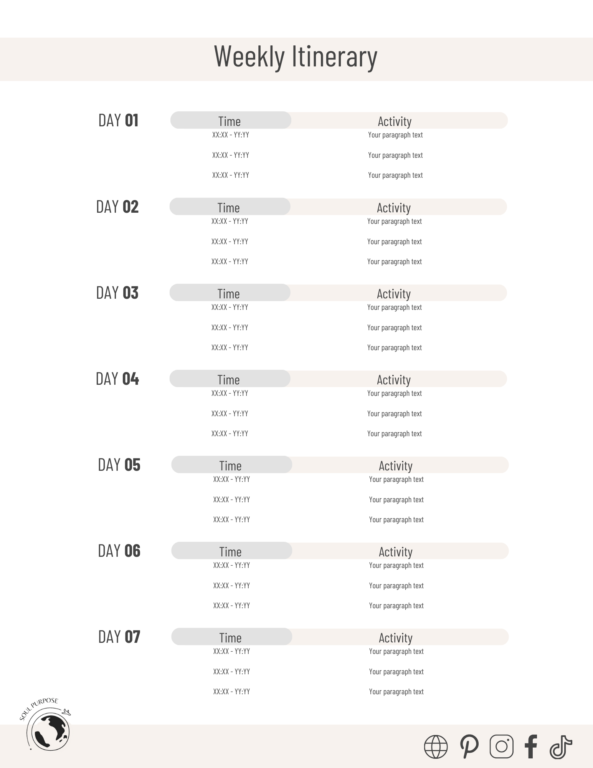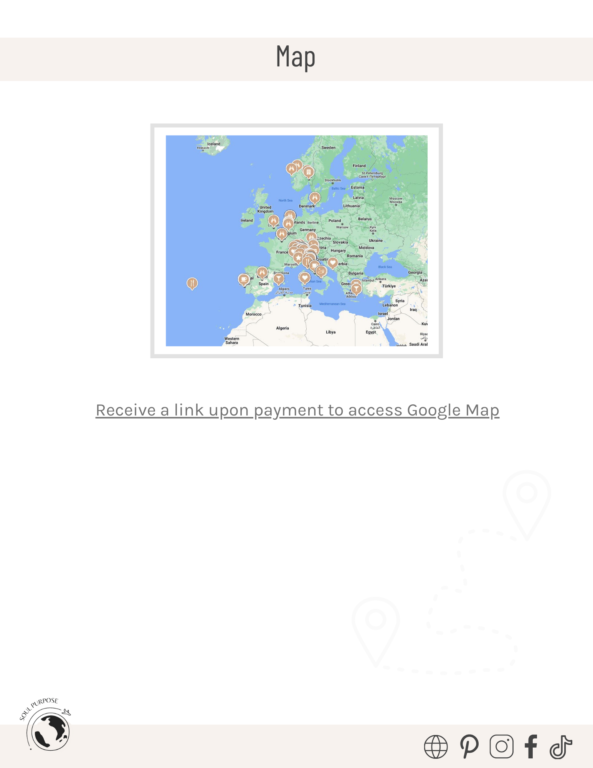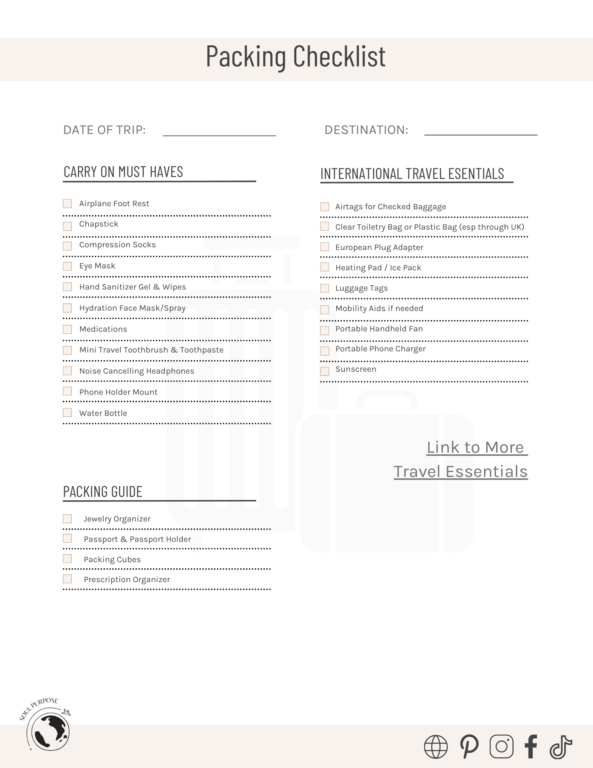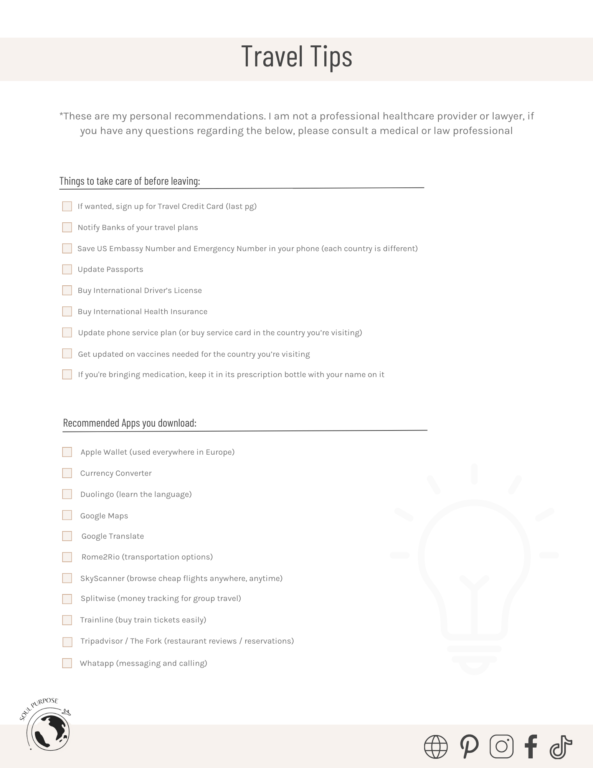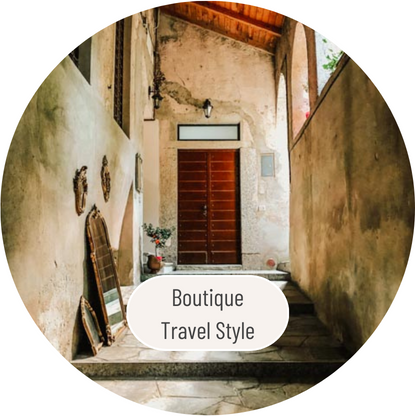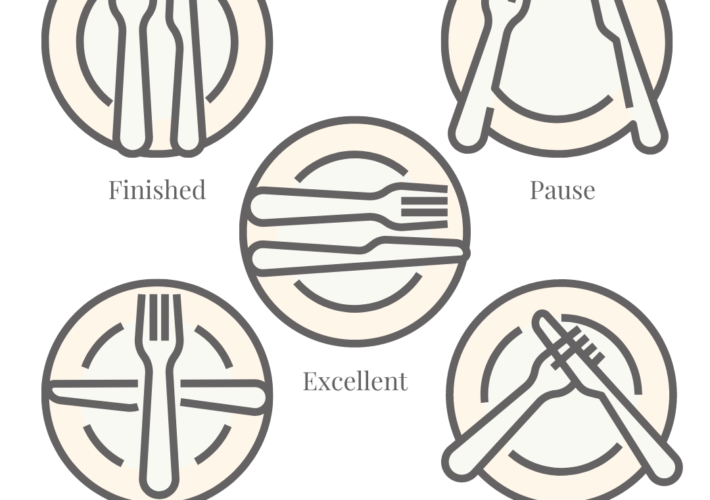The Accessible Travel Style is for travelers who identify with having a disability or impairment. They typically go above and beyond to confirm their basic needs are covered when booking accommodation, transportation, and experiences. Unfortunately, not being able to confirm if their basic needs will be met, or how accessible a place may be, is something they are used to. Our world wasn’t made for accessible travelers. Literally…centuries ago, when they were building the Colosseum, Duomo, or another ancient work of art, accessibility was not at the forefront of priorities.
However, that doesn’t mean it has to stop you from traveling overseas or checking off destinations from your travel bucket list. If anything, accessibility in Europe has continued to improve with time.
The Accessible Traveler
When we think of the word ‘Accessibility’ we typically think wheelchairs, disabled, ramps, handicap mobility aids…that sort of thing. However, accessible means a lot more than just the surface level, minimum ADA compliance requirements. Accessibility can pertain to a permanent or temporary injury, visible disability, invisible disability, visual, audible, mobile, cognitive, or speech impairments, pregnancy, chronic illness or disease, etc. The list goes on.
At any point in our lives, we could find ourselves identifying as an Accessible Traveler. If you are fortunate not to, you might travel with someone who is. The greatest thing about accessible travel right now, is it’s becoming more manageable and possible on the daily. These travelers are unique in their priorities, abilities, and travel requirements…just like their disabilities and symptoms are. Whether you are an accessible traveler for life or for now, you deserve to travel and feel good with your disability.
Invisible Disabilities
As someone who lives with an invisible disability, I struggle with traveling with an illness that no one can see on the outside. Since the beginning of this travel blog, I have shared my day to day and personal experiences, opinions, and ups/downs of living abroad + traveling with an invisible disability. There is a lot of stress and challenges that come from living with an invisible disability, and unfortunately, the travel industry has yet to relieve the struggle for people like me…
Because of this, whenever I travel I always bring my mobility aid to help my balance and reduce my pain when standing in long airport lines and security. Although, dealing with airport security when you look like me (a young, blonde, woman in her 20s), using a mobility aid, you catch a lot of heat.
Even though it’s NOBODY’S BUSINESS why I need a mobility aid or how I use it, the European Airlines and Airport staff LOVE to question me about it. And every time, I give them the same answer” because I have an invisible disability”. And every time they answer, “but you don’t look like you need it”. (NO SHIT SHERLOCK. OOOOHHHHH I RAGE). If you’re an invisible illness babe, welcome…here we get fucking real about the bullshit that is life and travel with invisible illness.
I can be on my soapbox all day about this, but instead you can follow me on Instagram and Tiktok for more day in the life moments in Italy + invisible illness.
Specialized or Unique Requirements
Not every disabled person is the same. They don’t all use the same wheelchair or mobility aid…they don’t have the same symptoms or illnesses. They don’t require the same support…they all have different needs. When planning travel, these travelers look for companies who can provide a unique customer experience. They want information from companies to be detailed and certain, with no room for error.
Whether you are booking travel services through an agent, or speaking directly with international businesses, always be specific about your requirements and do not downplay your disability or illness.
In a perfect world, all our needs will be met and there will be no surprises or issues, everything will go smoothly. In reality, it’s important to plan for mistakes and always have a backup plan…especially when visiting a country where English is not the first language. But if you come across someone in the service industry who can think one step ahead or go the extra mile to help bring certainty and comfort to your conditions, you’ve found a gem.
Different Standards Internationally
Accessible transportation for people with mobility issues is probably the least developed industry when it comes to traveling in Europe. The curb cut sidewalks in the US don’t really make an appearance throughout many areas of Europe. And sometimes hotels will market themselves as accessible when really they have stairs at the entry or a ramp with a drastic incline that would make a pro skater pause.
The point is, don’t expect Europe to have the same standards or procedures as the US, but don’t let that scare you. What this means is you might have to put a little more time into planning and research to make sure you are comfortable wherever you are traveling to.
And if you don’t have time to plan it yourself, you can call upon people who live abroad and plan travel internationally, often.
Know your Resources
Because the conversations around accessibility and inclusive travel are only increasing, the world is becoming more aware of these challenges and is working towards more inclusive destinations.
Public transportation has become relatively more accessible, depending on the company you’re booking with. If you’re traveling by train, travelers with mobility problems can book assistance in advance for train entry and exit. When traveling by metros it is possible to access by elevator, although you will need to determine what metro line you’re taking and if the building is full accessible to all metro lines. As for airport transfers, there are usually private buses you can reserve in advance that leave from a city’s central train station. Most of these will have an accessible service, but it might have fewer time slots with special booking requests submitted.
Here are a few of resources I share with accessible traveler friends and family:
Wheel the World for accessible travel experiences
Curb Free with Cory Lee for accessible travel blogs, vlogs, and tips
PRM Assist for booking accessible airport assistance and services
Hidden Sunflower Program for more resources on traveling with invisible illnesses
Know your Challenges
No matter where you go, it is never worth overdoing it or stressing yourself out. Know your limits and listen to your body. In a body we have little control over, what we can control is how we prepare, adapt, and react to whatever we are facing.
Companions of Accessible Travelers
What I mean by companion is, friends and family. I do not mean caretaker on this page. Caretakers have entirely different roles and responsibilities. For this page, I am talking about companions willing to join a trip, where they are not solely responsible for the wellbeing of the accessible traveler.
A very important first step to traveling with a disabled traveler is to have a conversation on each of your expectations, responsibilities, boundaries, limits, and emergency situations. This conversation can help you and your companion better understand what you expect of each other and how you can best support one another. Just as it will be helpful for you to set boundaries, it will be helpful for them to understand what your limits as well. This doesn’t have to be a complicated discussion, but it is important to have a conversation to help keep each other aware.
Be Sincere
If there is an issue that starts to trigger fear, stress, or hint at an inaccessible situation, know that it is an enormous issue for your accessible friend. And although they might have had a lifetime of practice keeping their shit together when something goes wrong, they are probably torn about it on the inside. Be sincere and sympathetic of your friend and any issues that arise.
Helping
Your accessible friend has learned to do things themselves their whole lives. So it feels amazing when our travel buddies have thought through a scenario so we don’t have to. If you want to help when planning travel for this trip, we love it when you’ve confirmed any vital information for us. Whether that’s how accessible an activity is or what the best route of travel is, taking the time to look up and confirm information we know we would have to do ourselves, is like our love language.
It is such a nice feeling when my friends have looked up how far the restaurant is from our hotel and books us an Uber so I don’t have to walk. It’s honestly the little things like this that help make us feel like we’ve been thought about and our disability has been considered. Not only is it less time and energy I need to spend confirming more details, but it’s less decisions I have to make in an already overly decisive day.
Know When Trouble Arises
Your accessible friends either 1) have no trouble speaking up and asking for what they need or 2) maybe they are new to disability/illness and have a hard time advocating for themselves. Know your person and when to step in or give support. It could be as simple as lending an ear after a frustrating encounter with the entry point or it could be requesting a lead personnel to speak with. It’s always more helpful to know we have people in our corner. But if at any point you are dealing with discrimination in any form, to include ableism and ageism, that is not okay and the environment is officially dangerous. It will be helpful to assist your companion in removing yourselves from the situation.
Things to Consider
It is very likely that you’ll run into accessibility issues nearly everywhere. After all, the world was not built for disabled persons. Just do your best to navigate together what the next best plan of action will be. When in doubt, safety is the best option.
In the event that you have to change plans completely (which might happen at least once during your travels), remain calm and take one step at a time. There is nothing worse than when our pain/energy/disability gets in our own way. Believe me, there is no one more pissed them ourselves, I promise. Although it might not be the perfect scenario or what was intended, the last thing we want is the person we are with to get frustrated with, annoyed at, or complain to us about it.
Pros & Cons of Accessible Travel
Pros
- Learn to get out of your comfort zone
- Reduced prices for disabled persons and their companion
- Guided or assisted services available
- Promotes brain health and neuroplasticity
- Feeling of accomplishment or overcoming fears when traveling
- The world is becoming more aware of invisible and visible disabilities
- More historic monuments are becoming more accessible
- Finding trusted, accessible businesses and resources you can return to
Cons
- Lack of accessible options via transport, accommodation, services, activities
- Areas within Europe might not be as accessible as other parts of the world
- When flying, medical devices and mobility aids can be returned damaged or lost
- Must take extra safety precautions and always be aware
- Might need more breaks or rest
- Takes a lot more time and research to plan
How to Plan an Accessible Trip
Step 1: Accessible Options
The best advice I can give for anyone planning their own trip, is to research across multiple platforms and cross exam the reviews on each. This should include a Google search, TripAdvisor photos, the business website, the business’ social media accounts, and reaching out via email and phone to a client services representative.
Consider Language Barriers
It’s very important that you speak to someone on the phone to confirm your options and what they have available. Because of the language barrier, you must keep in mind that some words or phrases can get lost in translation. This is crucial for accessible travelers because we do not have the time, energy, or resources for confirmations to get lost in translation. We need certainty and no surprises. So with that, you must speak with someone and ask MULTIPLE times what EXACTLY you are getting. Tell them as many details as possible, because these are important factors to discuss.
And by as many details as possible, I mean walk them through your entire day and what you need for every step of the way. You will literally need to hold their hand through this step in order to paint the picture for them. And that’s okay! It’s better to be overprepared than underprepared and ruin your trip because you didn’t ask enough questions or didn’t state exactly what you needed.
Written Confirmation as Proof
In addition to speaking on the phone, you should get their written confirmation of what you’ve agreed on and a detailed summary of what you discussed. This is so you have proof to show 1) what you discussed 2) what you are needed and 3) what you were told would be available to you, in working condition. Request photos and video footage of what you are requesting. Again, there should be no surprises.
If there are surprises, you need proof of what was agreed to. And unfortunately, Europeans will always say something is fine or ‘yes they have it’, because they are sweet and yeah they might have a ramp that you’re asking about. However, they don’t think through the key details and put themselves in your shoes when it comes to that ramp, or accessible shower, or low bed. They just assume it’s fine and it works. So don’t be afraid to ask multiple times and to speak to multiple people, because it is worth knowing what you’re getting yourself into.
Step 2: Itinerary Building
The following section refers to resources I’ve personally created to help with mine and my client’s travel planning. You can follow the guide below as you utilize the same resources for your own trip.
DOWNLOADABLE CANVA
$10
A beautiful, editable itinerary for any upcoming trip!
Get 25% Off
CANVA & EXCEL
$15
Utilize both packages for an escalated planning experience
DOWNLOADABLE EXCEL
$10
An this easy to manage excel sheet to keep you on track!
The most important thing to consider when planning an itinerary aside from booking accommodations and activities with accessible options, is the itinerary structure.
Taking the extra time to sit down and review the proximity to/from your places of interest is totally worth it. My favorite way to plan a daily itinerary is in the following order:
1) Days Open/Hours of Operation
This is a simple Google search, but write these down in the yellow section below. Many European businesses will take one day off during the week and they all differ in days. Keep this in mind before planning to go to a restaurant on a day they’re closed. Also check the EU holiday calendar to avoid showing up on holidays like ‘Bank Holiday’.
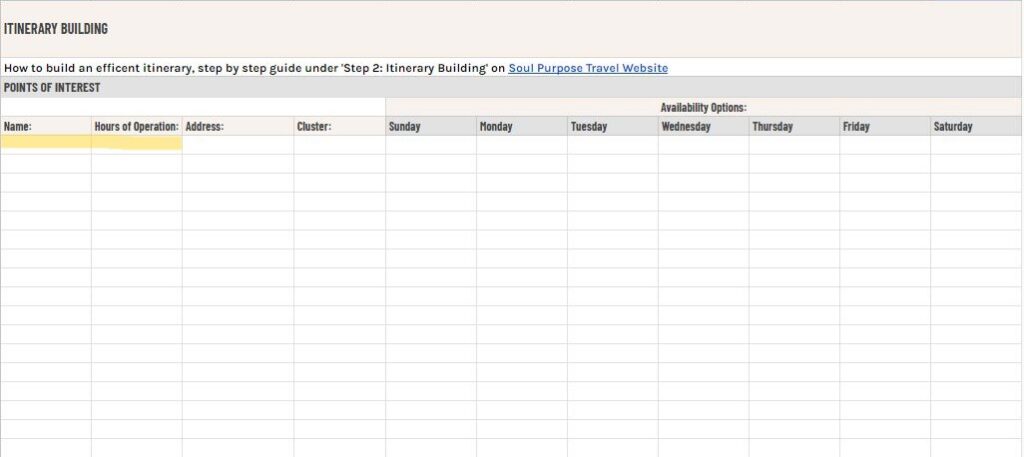
2) Location of Business
Do this simultaneously as step 1 above. Once you’ve found the Google address, save the Google pin. It’s also a great idea to save your search so you can keep your own record of places you’ve visited or want to visit, if you didn’t make it this time around. If you need travel recommendations with google pins already saved, check out my Travel Recommendations Catalog.
Once you’ve saved all your Google pins you can start the next phase of for this section. (For this part, I like to have my Travel Excelsheet and Google Map on side by side view). Look at your pins and group them by clusters…each cluster will represent either one full day or one half a day…you be the judge. It’s important to note, depending on the availability, you might have to revisit your clusters later in this process.
***One way non-accessable travelers can utilize this planning system if they are not concerned with proximity, is by scheduling their clusters by priority. Select your top 3 main priorities and schedule each one day, clustering any restaurants or activities around that one priority.***
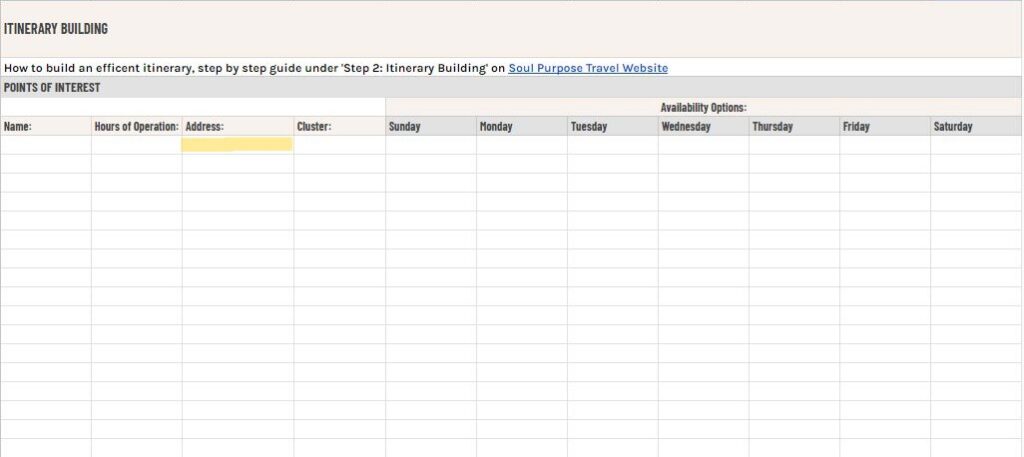
3) Availability
Next, you’ll need to either call, email, or check online for reservation times/dates available. If they have a website showing time slots available, this will be easy…write down a range of options for the week. If they don’t have this feature, you will need to call or email the business to ask their availability for the week. By not doing this step, you will find yourself scheduling at random and run into multiple scheduling issues and you’ll have to reschedule or start over. So it’s best to do the work up front and confirm after.
Once you’ve received the availability from all the places you’re interested in, you can look at your clusters and schedule your day according to availability.
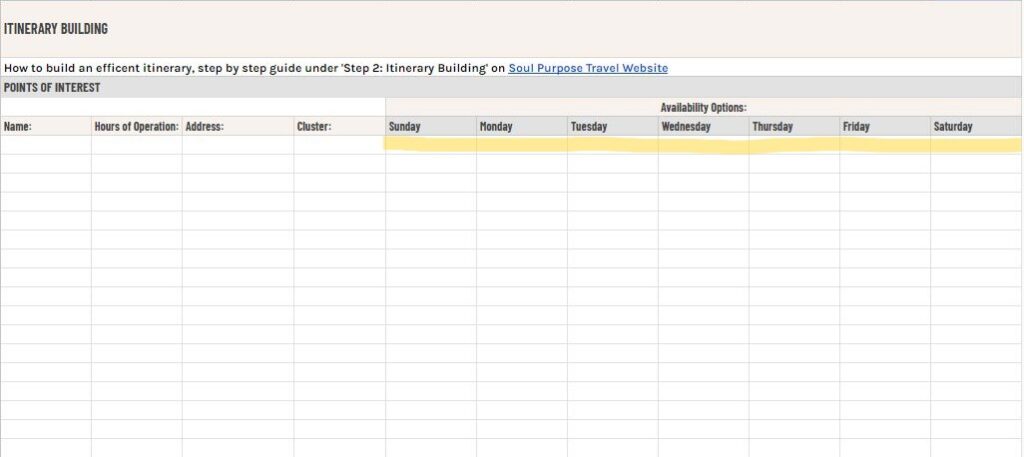
4) Proximity
After you’ve created your clusters you might notice a few outliers or groupings of museums & restaurants located in one area or another…this is where you’ll use step 4 and your own judgement to schedule or reschedule the clusters. You can start determining the layout of your day and the proximity it takes to get to/from and between each pin. I like to break the day into 3 parts: morning (before lunch), afternoon (after lunch up to before dinner), and evening (after dinner) when putting together my itinerary.
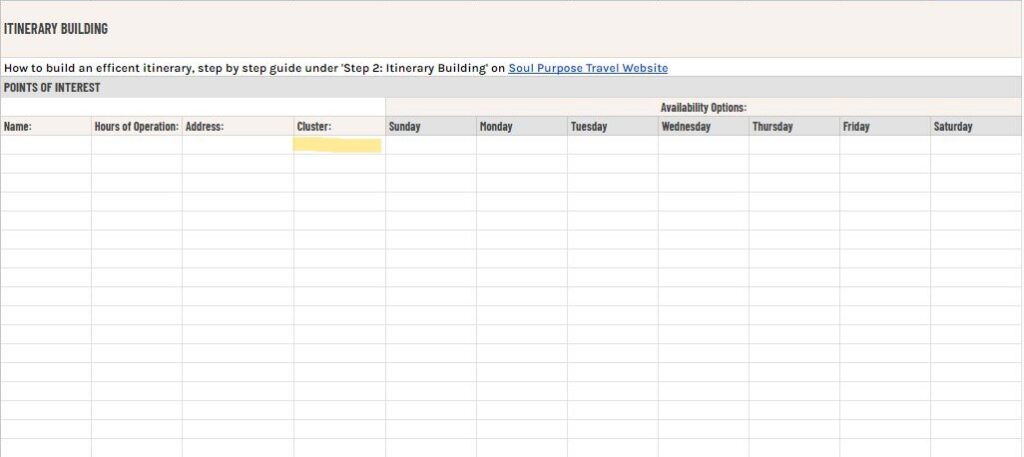
Group Clusters
Look at your cluster areas and confirm you have enough restaurants available for either lunch or dinner for these days. If you don’t, confirm which meal matters more to you from the restaurants you have listed, and schedule those into your Travel Itinerary Template. If you still don’t have enough you can either rearrange options into this cluster, OR, hold space for lunch/dinner and find a nearby restaurant either at a later time, or when in the area.
Repeat the same step with all your activities…see what parts of your day fit with each activity’s availability. A great rule of them is to schedule no more than 1 activity per part of the day (adjust the number based on your own energy and pain levels). For example, if I were considering my body and how it gets tired in the afternoons I would plan a longer museum in the morning, followed by lunch, and either one activity in the afternoon (or rest time scheduled here), followed by dinner. The activity in the afternoon would need to be something low energy out of the sun, and in close proximity to the hotel.
You’ll notice as you schedule your clusters based on availability and parts of the day, that you might need to rearrange a few map pins in order to best fit your itinerary. This is also a really good way of determining what your top priorities are in each city. Some of your priorities might take a lot of time or energy because it’s the farthest in proximity, and you’ll need most the day to attend it. That’s fine, so long as you don’t over schedule yourself afterwards.
Benefits of this Method
By scheduling your daily activities in clusters, you will minimize the distance traveled between scheduled events, which is the most efficient use of your time, energy, and money.
Without this method, you face scheduling yourself across different areas of town throughout the day. By doing this, you will spend more time and energy traveling between locations, which can potentially increase fatigue, pain, or other worsening symptoms.
Not only are we interested in scheduling an efficient itinerary so we can make the most of our days abroad, but we also want our itinerary to limit the worsening of our symptoms any chance we get, so that once we return home from our travels, our recovery from traveling is minimal.
So, take my tried and true process and follow this method. It is the easiest way to plan a day and keep track of alternating hours of operation, availability, and priorities when traveling.
Step 3: Schedule Breaks/Rest Time
When creating your travel itinerary it is vital to plan for breaks and rest time between your activities. Especially if the weather is super hot or cold…the temperature can impact many disabilities and symptoms.
How might you “schedule” in rest time on vacation? This could look like a relaxed morning at a café and stroll through the local market. Or an afternoon tea and, if possible, reserving time at the spa to rest your body before dinner. If you’re less excited about planning in breaks or rest time on vacation, you can also look up a couple relaxed spaces with live music or cute décor and plan to lounge there with a hydrating drink instead. Rest doesn’t have to be boring. Rest is proactive and an important feature for anyone, especially accessible travelers.

Author’s Note
Although there is no “right” way to plan an accessible trip, these are all my personal strategies that have worked for me, and that I’m happy to share with you.
I hope they are able to help you in your travel planning too.

